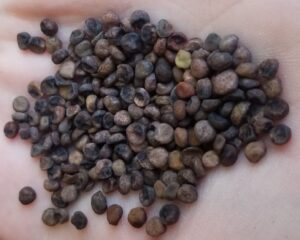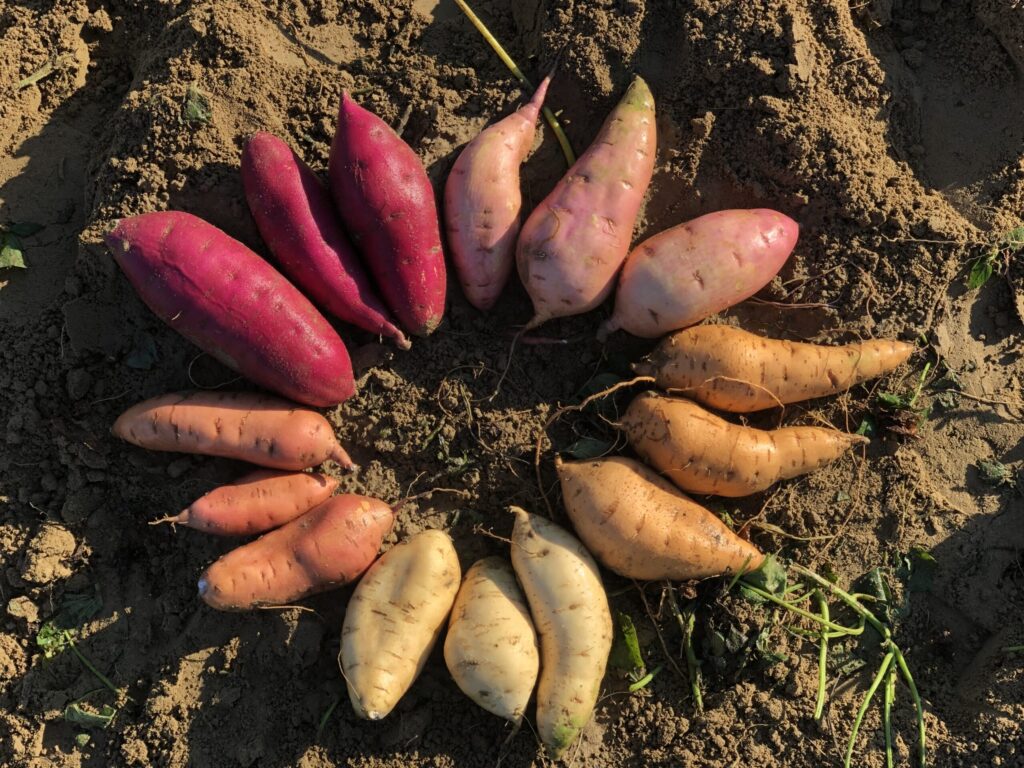Sweetpotato Breeding
Learn more about the history and process of breeding sweetpotatoes!
The process of sweetpotato cultivar development began in the United States in Louisiana with the Louisiana Agricultural Experimental Station around the 1930s. Dr. Julian C. Miller and other colleagues discovered how to induce flowering and seed set in sweetpotato cultivars available at the time, which allowed for genetic recombination and the production of new cultivars within a controlled setting.
Little did Dr. Julian and colleagues know just how expansive the sweetpotato breeding program would become, not only at Louisiana State University but across the United States. Today, the Louisiana Agricultural Experimental Station has one of the largest sweetpotato breeding programs in the United States, alongside the sweetpotato breeding program at North Carolina State University. Additionally, researchers have made contributions toward sweetpotato breeding at the U.S. Department of Agriculture (USDA) Agricultural Research Service U.S. Vegetable Laboratory located in Charleston, South Carolina.
The Process of Sweetpotato Breeding
The process of developing new cultivars that are high-yielding, disease-resistant, visually appealing, and tasty is no small task. Researchers at the sweetpotato breeding programs often have a plethora of traits that they look to improve, where it can potentially take many years for a single trait to be improved. With this in mind, researchers must be aware of the trajectory of the sweetpotato industry, including growers’ needs, consumers’ needs, and regulations, both domestic and international.

Credit: Simon Fraher
Cultivar development begins with the acquisition of “parent” sweetpotato plants that are genetically diverse and genetically unique, often with good flowering capabilities. Following acquisition and placement of the parents in a greenhouse (about 15-30), the parents are left to cross-pollinate in a nursery, where either bees, such as bumble bees, or humans can cross-pollinate the flowering sweetpotato parent plants (Benedict and LaBonte, 2009). After pollination and seed set, researchers will collect the resulting seeds. This often occurs during the fall. Researchers then plant the resulting seeds in the winter in a greenhouse. Come the following spring, the now-grown seedlings are planted in the field for the purpose of developing into fully mature sweetpotato plants. At harvest, metrics such as yield, shape, size, color, etc. are inspected. Following this inspection, the cultivars with the most desirable traits will be selected for further breeding/cultivar development.
If looking to improve a trait related to disease resistance, the cultivars that are chosen from the initial field test will then be challenged with the disease that is specific to the trait (e.g. exposing the plant to the Southern Root-Knot Nematode when looking to improve the Southern Root-Knot Nematode resistance trait). Following the disease screen, the best, in this case, the most disease resistant, cultivars will be selected for further breeding/cultivar development.

Credit: Simon Fraher
This cycle may continue many times over as the selected progeny from each cycle are used as the parents for the next round. After multiple selection cycles, the trait of interest will most likely present in most or all of the progeny (Benedict and LaBonte, 2009). When most or all of the progeny present the trait of interest (e.g. resistance to SRKN), other traits will be taken into consideration for the selection of parent plants including yield, shape, color, size, and other resistance traits. Following additional selection processes, researchers can produce progeny that are marketable to sweetpotato growers.